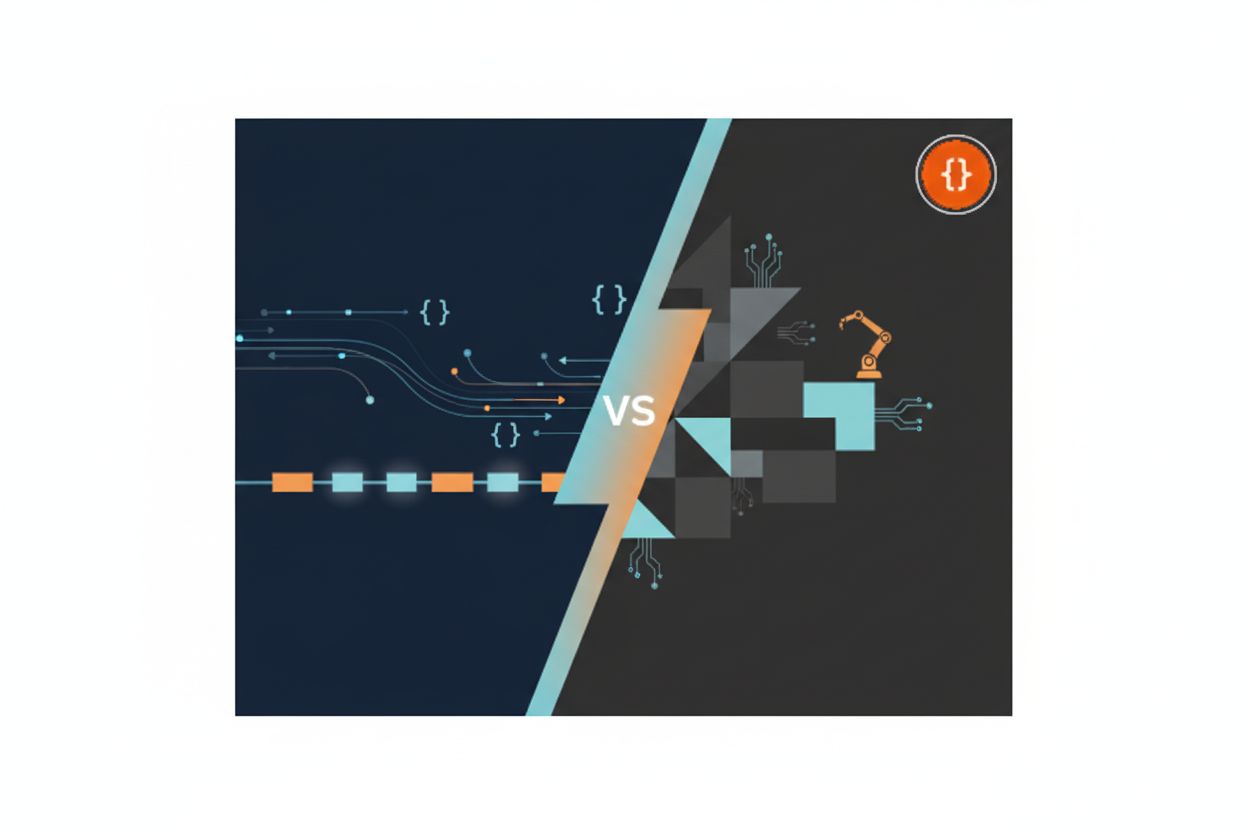Contract Testing with Consumer-Driven Contracts
TL;DR
Introduction to Contract Testing and Consumer-Driven Contracts
Contract testing, ever heard of it? It's like a prenup for your microservices – making sure everyone's on the same page before things get messy. This prenup analogy highlights how contract testing establishes clear expectations and agreements between services before they're fully integrated, preventing future disputes and integration bugs.
- It's all 'bout verifying interactions between services, like retail and payment gateways.
- Essential in microservice architectures, catching those integration bugs early.
- Think of healthcare apps; it prevents data mix-ups between different systems.
Basically, it keeps things running smoothly. Up next, we'll dive into the details of how consumer-driven contracts actually work.
Understanding Consumer-Driven Contract Testing in Detail
Consumer-Driven Contract (CDC) testing, huh? It's all about making sure the consumer's needs are met, like a customer always gets what they ordered, not what the chef thinks they want.
Here's the gist:
- The consumer defines the contract; basically, they say, "Hey, provider, I need this data exactly like this." Think of a mobile app needing specific data from a backend service to display product details; it sets the terms.
- Tests are the contracts. When a consumer writes tests to verify its interactions with a provider, these tests, when executed against a mock provider (or when the consumer's interactions are recorded), generate a file. This file, often called a "Pact," becomes the agreed-upon contract. If the provider's api doesn't pass the consumer's test (meaning, if the provider's actual implementation doesn't fulfill the expectations defined in the contract), then something's wrong.
- Tools like Pact help to do this automatically. Pact, as a consumer-driven contract testing tool, facilitates this by using a test double (a mock) that records the consumer's requests and the expected responses. These recordings are then saved into a contract file.
So, to understand how this all comes together, we'll next look at the benefits of this approach.
Benefits of Consumer-Driven Contract Testing
Wanna make sure your services play nice together? Consumer-Driven Contract (CDC) testing can really helps!
- It encourages collaboration; teams talk more, and understand each other better, like frontend and backend folks finally on the same page.
- Contracts become living documentation, so everyone knows how things should work.
- Less surprises when integrating, cause you catch those pesky bugs early.
- Faster development cycles: Because contract tests are isolated and focus on specific interactions, they run much quicker than end-to-end tests. This rapid feedback loop allows developers to identify and fix integration issues much earlier in the development process, significantly speeding up the overall development cycle.
Up next, we'll explore some common scenarios where contract testing really shines.
Use Cases for Contract Testing
Contract testing's not just buzz; it's a legit way to dodge integration headaches. Where does it shine, though?
- Microservices Compatibility: Makes sure all those little services are actually talking the same language, preventing chaos in complex systems. Think of an e-commerce platform: contract tests ensure the product catalog, shopping cart, and payment gateway all jive.
- api Integrations: It's like a handshake agreement for your code, especially when you're dealing with external apis. If some third-party api changes, contract testing will flag it.
- Versioning: New version of your api? Contract tests confirm that the old and new versions are still friends.
Next up, let's compare contract testing to other testing methods you might be familiar with.
Contract Testing vs. Other Testing Types
Contract testing – is it just another type of testing, or is it something completely different? Well, its kinda both! It's all about making sure services can actually talk to each other, but it goes about it in a unique way compared to other testing methods.
Scope and focus: Contract tests, they zone in on those interactions between services. Integration tests checks if the whole system works together. (What is System Integration Testing | BrowserStack)
Test environment and data: Contract testing? Mock data's the name of the game. This reliance on mock data is a key differentiator, allowing contract tests to run without complex, production-like environments. Integration testing, on the other hand, uses real data and needs a setup that's just like prod, according to blazemeter.
Debugging and complexity: With contract testing, finding the issue is easier because it's smaller. Integration testing can be a headache to debug because it involves lots of services at once.
Speed and reliability: Contract tests run fast and are more reliable, since they don't depend on the whole system being up. This speed and reliability comes from their isolation from external dependencies and their focused scope. end-to-end (e2e) tests? well, they're slower and can break easily, according to microsoft.
Maintenance effort: contract tests are easier to keep up, since you're only dealing with the api contract. e2e tests, though, take more effort 'cause you gotta maintain the whole environment.
Feedback loops: contract testing gives you quick feedback, so you can catch bugs early. e2e tests take longer, meaning bugs are found later in the game, if that makes sense.
So, up next, we'll explore the tools and frameworks that can help you implement contract testing.
Tools and Frameworks for Consumer-Driven Contract Testing
Consumer-Driven Contract (CDC) testing got you scratching your head? Well, don't worry, 'cause it's time to check out some tools that'll make your life easier.
- Pact is a popular choice. It lets consumers and providers define and verify contracts, supporting lots of languages and frameworks. With Pact, the consumer code generates the contract, using a consumer-driven approach. This means the consumer dictates the contract, and the provider must adhere to it.
- Spring Cloud Contract is another tool for CDC testing. Unlike Pact, it's provider-driven. This means the provider defines the contract (often in Groovy or YAML), and the consumer then generates tests based on that provider-defined contract. This approach can be useful when the provider has a clearer vision of the API's requirements.
- Also, there's tools like Swagger/OpenAPI and Karate DSL for defining api specs and automating tests.
So, what's next? We'll discuss how to actually implement contract testing in your projects.
Implementing Contract Testing: A Step-by-Step Guide
Alright, so you're ready to actually do some contract testing? Cool, let's get into it.
- First, setting up your environment is key. You'll need to, like, pick the right tools – Pact, Spring Cloud Contract, whatever floats your boat. Then, get your consumer and provider projects configured correctly. This typically involves adding specific testing dependencies to your project (e.g., Pact JVM for Java consumers) and configuring your build tools to run these tests. For example, a consumer project might need a
pactconfiguration block in itsbuild.gradleorpom.xmlto specify the provider name and the output directory for contracts. A provider project would need similar configurations to enable contract verification. - Next, you gotta write & run those contract tests. The consumer defines what it expects, then generates a contract. For instance, a consumer might write a test that makes a GET request to
/products/123and asserts that the response has a200 OKstatus and a JSON body containing anidandnamefield. Pact would then record this interaction and save it as a contract. - Finally, the provider side verifies that contract. The provider runs its own tests against the contract file generated by the consumer. If it fails, you know somethings wrong.
- Don't forget a contract repository. Keep those contracts in a central spot so everyone's on the same page, know what I mean? A contract repository, like the Pact Broker, is a dedicated service that stores and manages your contract files. It acts as a central hub, allowing consumers to publish their contracts and providers to fetch them for verification. This ensures that both teams are working with the latest agreed-upon specifications and helps track compatibility between different versions of services.
Basically, it's all about defining expectations and making sure everyone sticks to 'em. Up next, we'll cover some best practices and common pitfalls to watch out for.
Best Practices and Common Pitfalls
Contract testing, it's not all sunshine and rainbows you know? There's definitely some things to watch out for.
- Versioning contracts are important; you don't want chaos when things change. Think of it like updating your phone's os – gotta make sure all your apps still work, right? Contract versioning is typically managed through the contract repository. When a consumer makes a breaking change, they publish a new version of their contract. The provider can then choose to verify against specific versions, allowing for a controlled rollout of changes. Not versioning correctly can lead to consumers unknowingly breaking providers or vice-versa.
- Breaking changes? Handle 'em carefully. Like, if a field gets renamed, let everyone know ahead of time. Contract testing helps manage breaking changes by failing verification when such changes occur. If a provider renames a field, the consumer's contract will expect the old field name. When the provider tries to verify its implementation against this contract, the verification will fail, immediately signaling a breaking change that needs to be addressed. This explicit failure provides a clear signal to both teams.
- Communication is key, keeping folks in the loop about updates avoids headaches down the line.
So, next up, we'll wrap things up with a conclusion on embracing consumer-driven contract testing.
Conclusion: Embracing Consumer-Driven Contract Testing
Consumer-Driven Contract (CDC) testing, huh? It might sound like a hassle, but trust me, it's worth it.
- It's all about collaboration, so teams communicate better.
- Contracts act like living documentation, so everyone is on same page.
- Catches bugs early, so there's less surprises during integration.
So, embrace cdc testing – your services will thank you for it.






